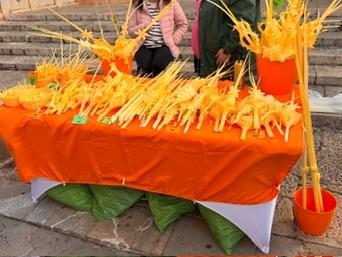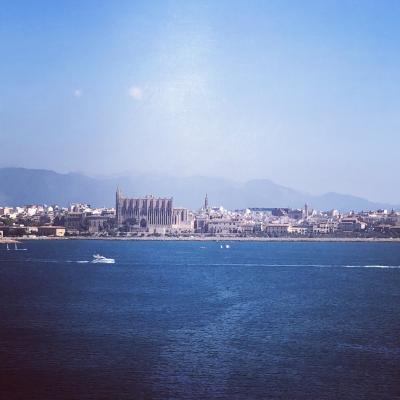Which neighborhoods in Palma are known for their selection of handmade jewelry and textiles?
Similar Topics
handmade jewelry palma
santa catalina crafts
la lonja textiles
artisan shops palma
traditional mallorcan jewelry
handwoven fabrics palma
artisan workshops palma
mediterranean textile crafts
In Palma, the neighborhoods known for their selection of handmade jewelry and textiles are primarily the historic districts of Santa Catalina and La Lonja. Santa Catalina, once a traditional fishing quarter, has evolved into a vibrant, artistic area that attracts both locals and tourists searching for unique artisan crafts. Small boutiques and workshops line the streets, offering finely crafted jewelry that reflects both contemporary design and traditional Mallorcan motifs. Visitors can find pieces made from silver, gold, and local stones, many created by independent designers dedicated to preserving the art of handmade craft. The neighborhood’s charm is enhanced by its lively markets and local cafés, making it an inviting place to explore for those interested in bespoke accessories.
Similarly, the La Lonja district, located near Palma’s old harbor, is renowned for its creative atmosphere and concentration of artisan shops. The narrow streets of La Lonja house numerous small galleries and studios where visitors can discover textiles ranging from handwoven fabrics to intricately embroidered garments. These textiles often showcase Mediterranean influences and traditional craftsmanship techniques passed down through generations. La Lonja is also home to several cooperative workshops supporting local artisans, which helps sustain the authentic quality of the products on offer. The neighborhood’s blend of historic architecture and cultural vibrancy creates an inspiring backdrop for a leisurely stroll while exploring its unique handmade treasures.
Both neighborhoods benefit from Palma’s broader resurgence of interest in artisanal goods, helping to keep traditional crafts alive in a modern context. Visitors looking for handmade jewelry and textiles will appreciate the personalized service and stories behind each item, often gaining insight into the creative process directly from the artists. Whether seeking a special souvenir or a distinctive piece to add to a collection, Santa Catalina and La Lonja provide an enriching experience that highlights the craftsmanship and artistic heritage of Palma. These areas are ideal for those who value quality, artistry, and the opportunity to engage with the local creative community.
Similarly, the La Lonja district, located near Palma’s old harbor, is renowned for its creative atmosphere and concentration of artisan shops. The narrow streets of La Lonja house numerous small galleries and studios where visitors can discover textiles ranging from handwoven fabrics to intricately embroidered garments. These textiles often showcase Mediterranean influences and traditional craftsmanship techniques passed down through generations. La Lonja is also home to several cooperative workshops supporting local artisans, which helps sustain the authentic quality of the products on offer. The neighborhood’s blend of historic architecture and cultural vibrancy creates an inspiring backdrop for a leisurely stroll while exploring its unique handmade treasures.
Both neighborhoods benefit from Palma’s broader resurgence of interest in artisanal goods, helping to keep traditional crafts alive in a modern context. Visitors looking for handmade jewelry and textiles will appreciate the personalized service and stories behind each item, often gaining insight into the creative process directly from the artists. Whether seeking a special souvenir or a distinctive piece to add to a collection, Santa Catalina and La Lonja provide an enriching experience that highlights the craftsmanship and artistic heritage of Palma. These areas are ideal for those who value quality, artistry, and the opportunity to engage with the local creative community.
🧩 Related Questions
Related Question
What role do Jacaranda trees play in the local ecosystem of Mallorca?
Related Question
Are there any specific laws tourists should be aware of regarding street vendors in Mallorca?
Related Question
What historical factors have contributed to the current status of Catalan in Mallorca compared to other regional languages in Europe?


